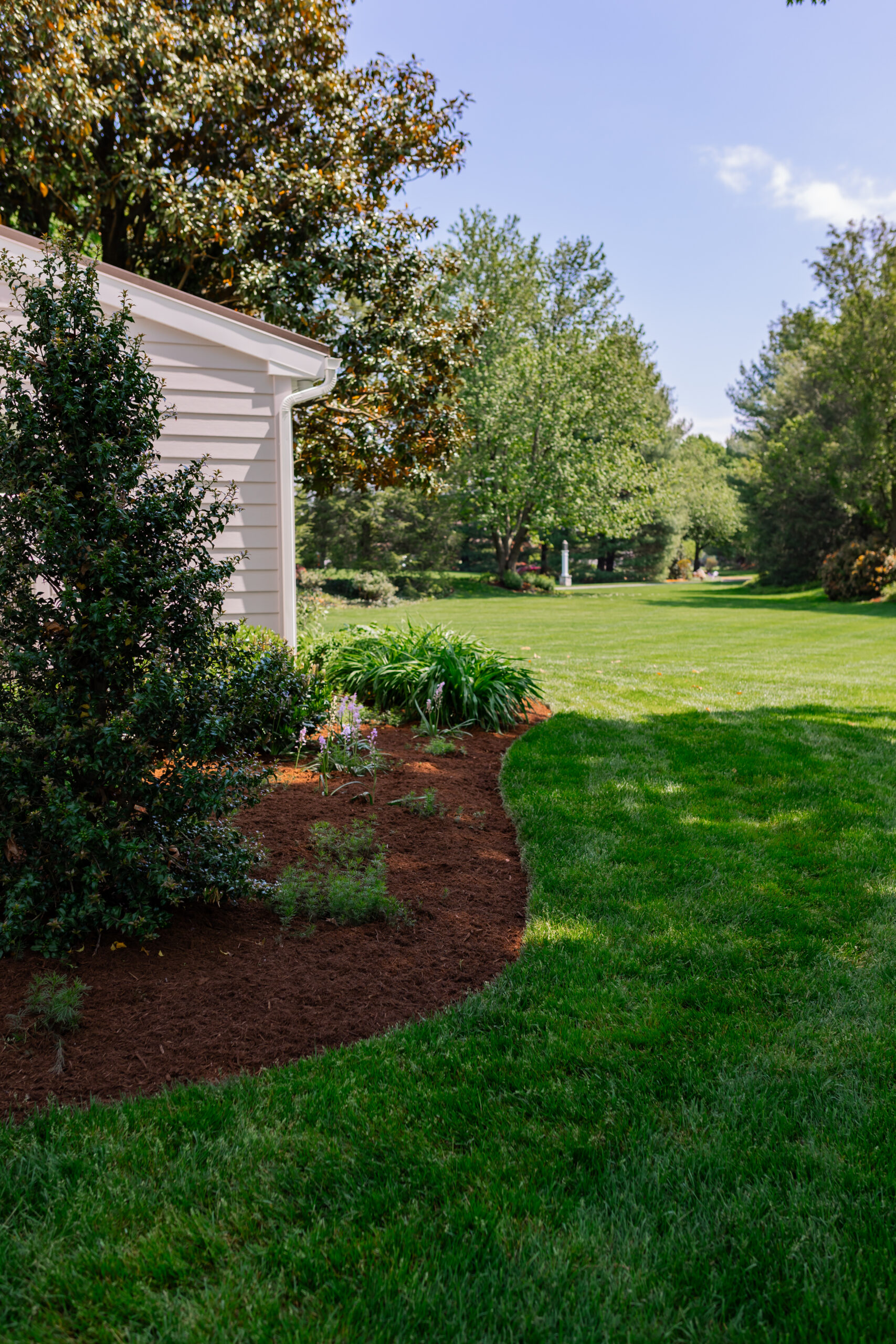How to Protect Your Plants and Lawn During Winter
Winter can be harsh on your yard. Cold temperatures, ice, and snow take a toll on lawns, trees, and plants if they are unprotected. Proper winter lawn and plant care ensures your landscape thrives come spring. From insulating plants to winterizing your lawn, this guide will help you protect your outdoor investments throughout the colder months.
Preparing Your Lawn for Winter
Before the first frost, focus on preparing your lawn so it stays healthy through winter.
- Mow Properly: Gradually lower your mowing height in late fall. Aim for grass about 2-2.5 inches tall. Too short exposes roots to freezing temperatures; too long risks mold growth.
- Aerate the Soil: Aeration loosens compacted soil, allowing air, water, and nutrients to reach grass roots. This strengthens the lawn before it goes dormant.
- Apply Winter Fertilizer: Use a winterizing fertilizer with high potassium content to fortify grass roots and boost cold resistance.
- Remove Leaves and Debris: Leaves left on the lawn block sunlight and trap moisture, promoting mold and fungal diseases. Rake thoroughly or mulch leaves into small pieces for nutrients.
- Overseed Sparse Areas: Overseeding patches helps fill in weak spots, ensuring even growth come spring. Choose cool-season grasses for winter hardiness.
How to Protect Perennials and Shrubs
Perennials and shrubs need added insulation to withstand freezing temperatures.
- Mulch for Insulation: Apply 2-3 inches of mulch around the base of perennials and shrubs. Mulch retains soil warmth, prevents frost heaving, and protects roots from temperature fluctuations.
- Use Burlap Wraps: Wrap vulnerable shrubs (like boxwoods and hydrangeas) in burlap to protect them from windburn and heavy snow. Avoid using plastic, which traps moisture and can harm plants.
- Prune Strategically: Prune dead or diseased branches before winter. Avoid heavy pruning, as this stimulates new growth that won’t survive the cold.
- Water Before the Freeze: Deeply water shrubs and perennials in late fall to ensure they enter winter well-hydrated. Dry plants are more susceptible to winter injury.
Winter Care for Trees
Cold winters can stress trees, particularly young or sensitive species.
- Install Tree Wraps: Use tree wraps to protect trunks of young trees from sunscald (damage caused by fluctuating daytime and nighttime temperatures) and rodents.
- Mulch Around the Base: Spread mulch 2-4 inches around tree bases to regulate soil temperature and moisture. Keep mulch several inches away from the trunk to prevent rot.
- Protect Evergreens: Evergreens lose moisture during winter. Use anti-desiccant sprays to reduce water loss from needles.
- Check for Snow Accumulation: Gently brush heavy snow off branches to prevent breakage. Avoid shaking limbs, as frozen branches may snap.
Caring for Potted and Delicate Plants
Potted plants and delicate species require extra care during winter.
- Bring Pots Indoors: Move potted plants inside or into a garage, shed, or greenhouse before the first freeze. Use grow lights for plants requiring sunlight.
- Wrap Pots for Insulation: If plants must stay outside, wrap pots in burlap, bubble wrap, or blankets to insulate roots.
- Choose Hardy Plants: Opt for winter-hardy plants like heathers, pansies, or ornamental kale that can withstand cold temperatures.
- Elevate Pots: Place pots on risers or bricks to prevent soil from freezing solid against the ground.
Preventing Frost Damage
Frost can cause significant damage to plants and lawns without proper precautions.
- Cover Sensitive Plants: Use frost blankets, burlap, or old sheets to cover plants overnight when frost is forecasted. Remove coverings during the day to allow sunlight and airflow.
- Avoid Early Morning Watering: Frost can form if water freezes overnight. Water plants mid-morning when temperatures rise.
- Use Insulating Materials: Straw, hay, or mulch around the base of plants can protect roots from frost heaving (when soil expands and contracts due to freezing and thawing).
- Choose Frost-Resistant Plants: Incorporate hardy plants like winter jasmine, hellebores, and certain conifers that can endure winter conditions.
Snow Removal Tips to Avoid Lawn Damage
Snow accumulation can compact soil and damage grass if not handled properly.
- Use Lightweight Shovels: Opt for plastic shovels instead of heavy metal ones to avoid scraping the lawn surface.
- Avoid Salting Grass Areas: Salt can harm grass and plants. Use sand or calcium chloride-based alternatives to melt ice safely.
- Create Safe Pathways: Keep walkways clear of snow to avoid foot traffic across lawns, which compacts soil and damages dormant grass.
- Pile Snow Strategically: Avoid piling snow on shrubs or delicate plants. Distribute snow evenly across lawn areas where it can melt naturally.
Common Mistakes to Avoid During Winter
Even well-intentioned homeowners sometimes make mistakes during winter lawn and plant care. Here are the most common ones to avoid:
- Overwatering or Neglecting Water: Too much water can cause root rot, while too little leaves plants dry and vulnerable. Strike the right balance before the freeze.
- Skipping Fall Preparation: Delaying lawn fertilization, aeration, or mulching compromises plant resilience in winter.
- Walking on Frozen Grass: Walking on frozen lawns damages fragile grass blades and soil structure.
- Using Inappropriate Plant Covers: Plastic wraps or materials without airflow can trap moisture and cause mold or rot. Stick to breathable fabrics like burlap or frost blankets.
Conclusion
Protecting your lawn and plants during winter doesn’t have to be difficult. By preparing your yard in the fall and following these winter care tips, you can ensure your landscape emerges strong and healthy in spring. Proper mulching, strategic pruning, and using the right protective materials go a long way in preventing winter damage.
If you’re unsure where to start, Integrity Land Works offers professional landscaping services to keep your yard winter-ready. Let us handle the heavy lifting so you can enjoy a worry-free winter. Contact us today to learn more about our winter lawn and plant care services.
Frequently Asked Questions (FAQ)
How can I prepare my lawn for winter?
Mow your lawn to about 2-2.5 inches, aerate the soil for better airflow, and apply a winter fertilizer to strengthen roots. Remove leaves and debris to prevent mold and diseases.
How do I protect sensitive plants from frost?
Cover sensitive plants with breathable materials like burlap or frost blankets overnight. Mulch around their roots for added insulation and remove covers during the day to allow sunlight.
Should I water my plants during winter?
Yes, but only on warmer days when the temperature is above freezing. Water deeply in late fall to ensure plants stay hydrated before dormancy.
How can I prevent snow and ice damage to my yard?
Avoid piling heavy snow on plants or grass. Use a plastic shovel to clear snow gently and opt for sand or calcium chloride instead of traditional salt for melting ice.
What’s the best way to protect potted plants in winter?
Move potted plants indoors, into a garage, or greenhouse. If left outside, wrap the pots with insulation materials like burlap and elevate them off the ground.



